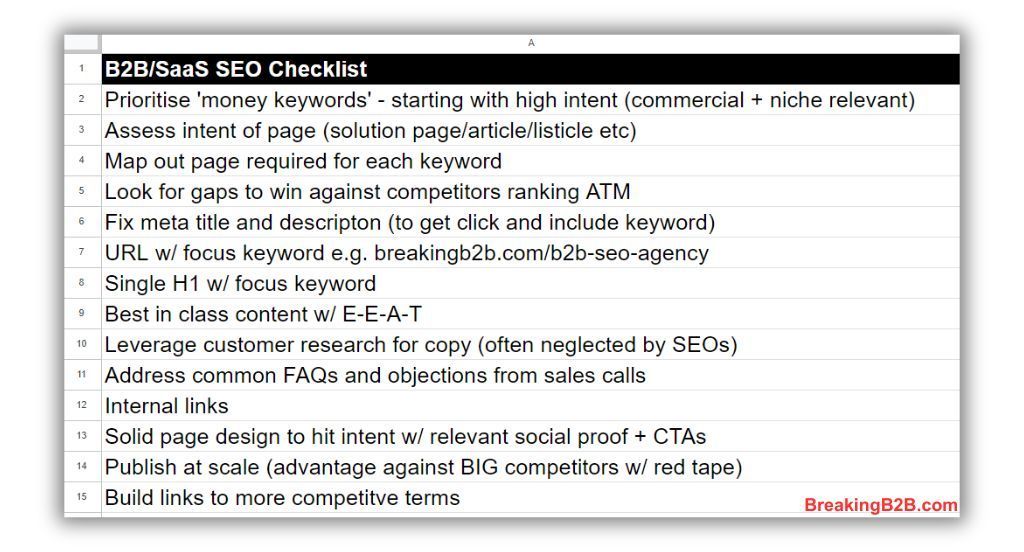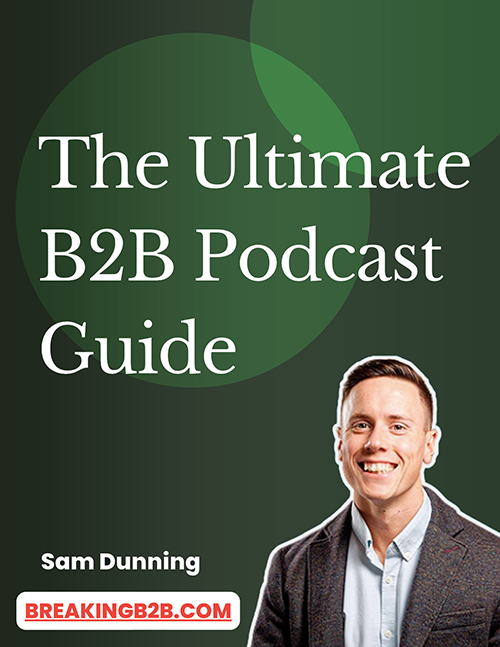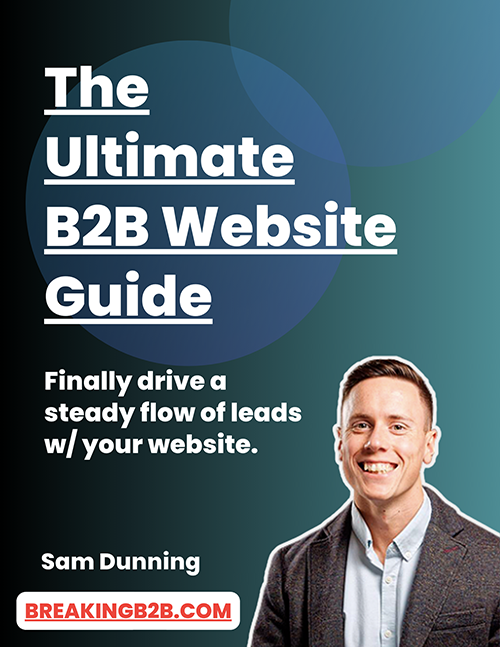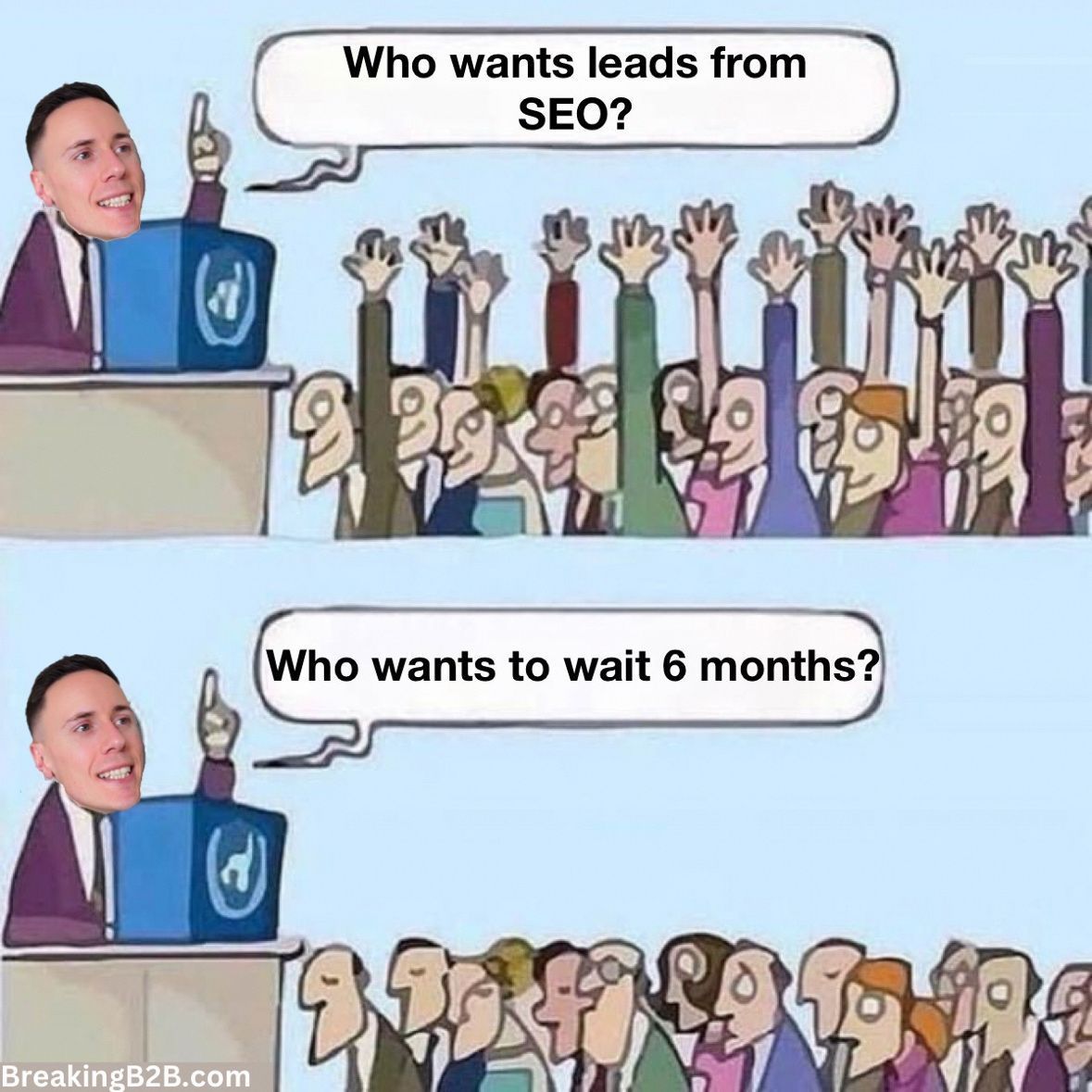16 Important SaaS SEO
Marketing Metrics
You Should Track!
Author: Sam Dunning ✪ Date: June 26th 2024
In the Software as a Service (SaaS) industry, standing out in a competitive market is no small feat. With thousands of SaaS companies vying for attention globally, mastering the nuances of SEO marketing has never been more critical. But where do you start? What SaaS SEO marketing metrics should you be focusing on to ensure your SaaS product doesn't just blend into the crowd?
This guide covers the key SaaS SEO marketing metrics you should track to grow your business. It is your roadmap to understanding the key performance indicators that can make or break your SEO strategy.
If you're seeking valuable insights on the very latest SEO trends, head on over to the relevant article
>
HERE!<
1. Customer Churn Rate
Understanding your customer churn rate is essential for evaluating the long-term success of your SaaS business. If you don't know how many customers you're losing over a specific period, you can't accurately measure the health of your business.
Churn rate reflects the percentage of customers who cancel their subscriptions, and it's a critical metric to keep an eye on. A high churn rate indicates dissatisfaction, product issues, or unmet customer expectations.
To calculate your churn rate, divide the number of customers lost during a period by the total number of customers at the start of that period. Multiply the result by 100 to get a percentage. For instance, if you began the month with 100 customers and lost 5, your churn rate would be 5%.
Monitoring this rate helps you identify patterns and triggers for customer departures. You can then use this data to improve your product, enhance customer service, or refine your marketing strategies.
Lowering your churn rate means retaining more customers, which in turn boosts your revenue and reduces acquisition costs. Ultimately, understanding and managing your churn rate is vital for sustainable growth and customer satisfaction.
2. Unique Visitors
Unique visitors represent the number of distinct individuals who visit your site over a specified period. This metric is vital because it tells you how many potential customers are discovering your brand.
By analysing unique visitor data, you can determine the success of your SEO strategies. For instance, if you notice a spike in unique visitors after publishing a new blog post or optimising your content for specific keywords, it indicates your efforts are paying off.
Additionally, understanding where your unique visitors are coming from—be it search engines, social media, or referral links—can help you allocate resources more effectively. If most of your visitors are arriving via organic search, investing more in SEO can be beneficial.
Tracking unique visitors also allows you to identify trends and patterns over time. For example, you might find that traffic increases during certain times of the year, helping you plan future marketing activities. You can track unique users using tools like Google Analytics.
3. Customer Engagement
When you keep audiences engaged, you're not just attracting visitors; you're building relationships. Use the following tips to boost engagement:
- Start by creating a high-quality product that addresses your customers' needs and pain points. This will make customers more likely to use your SaaS product and spend more time on your platform.
- Monitor metrics such as average session duration and interactions per session to gauge engagement. A shorter average session duration might indicate that visitors aren't finding what they're looking for, while a longer one suggests they're interested in your SaaS product.
- Track social shares, comments, and likes can provide insight into how your product resonates with your audience.
- Don't underestimate the power of email marketing to keep your customers engaged. Personalised emails, updates, and newsletters can remind them of your value and keep them coming back.
- Use feedback tools like surveys and reviews to understand what your customers think and feel about your product or feature.
Focusing on customer engagement fosters loyalty and guarantees your SEO efforts translate into meaningful, long-term relationships.
4. Customer acquisition cost (CAC)
One of the top criticalSaaS SEO marketing metrics you should focus on is Customer Acquisition Cost (CAC). CAC represents the total cost of acquiring a new customer, including all marketing and sales expenses.
To calculate it, simply divide your total acquisition costs by the number of new customers acquired over a specific period.
For instance, if you used $8,000 to market your product for a certain period and got 10 customers, then the CAC would be $800.Understanding your CAC helps you determine the efficiency of your marketing strategies.
If your CAC is high, you may need to refine your SEO tactics, reduce spending on less effective channels, or improve your conversion rates. Conversely, a low CAC indicates that your current strategies are cost-effective and likely sustainable.
Monitoring CAC allows you to allocate your budget more wisely. By identifying the most cost-efficient channels and tactics, you can focus your resources where they'll have the greatest impact. Tracking CAC over time helps you spot trends and make informed decisions about scaling your marketing efforts.
5. Customer lifetime value (CLV)
After understanding your Customer Acquisition Cost, it's equally important to measure Customer Lifetime Value (CLV) to gauge the long-term profitability of your customers.
CLV shows you the total revenue you can expect from a single customer account throughout their entire relationship with your business. Knowing this metric helps you make informed decisions about how much to invest in acquiring and retaining customers.
To calculate CLV, multiply the average purchase value by the annual purchases a customer makes, then multiply by the average customer lifespan. For instance, if a customer spends $100 per purchase, buys from you five times a year, and stays with your company for three years, their CLV would be $100 x 5 x 3 = $1,500.
Understanding CLV enables you to optimise your marketing strategies, improve customer retention, and increase profitability.
It helps you identify which customer segments are the most valuable, allowing you to tailor your marketing efforts to retain them. Moreover, a high CLV indicates strong customer satisfaction and loyalty, which are essential for sustainable growth.
6. CLV: CAC ratio
Understanding the CLV: CAC ratio is essential because it helps you assess the efficiency of your marketing and sales efforts in acquiring high-value customers. This ratio compares the lifetime value of a customer (CLV) to the cost of acquiring that customer (CAC).
A higher ratio indicates that you're efficiently generating more revenue from each customer relative to what you're spending to bring them in. To calculate this ratio, divide the CLV by the CAC. For instance, if your CLV is $900 and your CAC is $300, your CLV: CAC ratio is 3:1.
This means for every dollar you spend on acquiring a customer, you earn three dollars in return. A ratio of 3:1 or higher is generally considered healthy, signalling that your marketing strategies are cost-effective. Understanding this metric allows you to optimise your marketing budget.
If your ratio is low, you might be spending too much on customer acquisition or not generating enough revenue from each customer. By analysing and improving this ratio, you can make more informed decisions about where to allocate resources. This ultimately drives growth and profitability for your SaaS business.
7. Net promoter score (NPS)
The Net Promoter Score (NPS) is an essential metric for evaluating the likelihood of your customers recommending your SaaS product to others.
NPS is determined by asking customers one simple question: 'On a scale of 0 to 10, how likely are you to recommend our product to a friend or colleague?' Based on their responses, customers are categorised into three groups: Promoters (9-10), Passives (7-8), and Detractors (0-6).
To calculate your NPS, subtract the percentage of Detractors from the percentage of Promoters. The result can range from -100 to 100. A high NPS indicates that your product is well-loved and likely to be recommended, driving organic growth. Conversely, a low NPS signals dissatisfaction and potential churn, highlighting areas needing improvement.
Regularly tracking your NPS helps you understand customer sentiment and engagement. More importantly, it provides actionable insights into how you can enhance your product and customer experience.
By focusing on converting Detractors to Promoters, you can foster a loyal customer base that not only stays longer but also actively promotes your SaaS product to others.
There's more in-depth help and guidance for technical SEO inside my > SaaS SEO Technical Guide
8. Lead Velocity Rate
Lead Velocity Rate (LVR) is an essential metric that quantifies the growth rate of qualified leads month over month, providing insight into your SaaS business's future revenue potential.
By tracking LVR, you can gauge how well your marketing efforts are attracting prospects likely to convert into paying customers. A steady increase in LVR indicates that your lead-generation strategies are effective and that future revenue growth is on the horizon.
To calculate LVR, compare the number of qualified leads generated this month with the number generated last month, then divide the difference by last month's total and multiply by 100 to get a percentage.
This simple formula helps you understand the pace at which your potential customer base is expanding. For example, if you had 200 qualified leads this month and 150 last month, your LVR would be 33%.
Monitoring LVR allows you to make informed decisions about scaling your marketing efforts. If you notice a dip, it might signal the need to revisit your SEO tactics or explore new lead-generation channels. Consistently high LVR means you're on the right track, and you can confidently plan for future growth and resource allocation.
9. MQL to SQL Conversion Rate
Transforming Marketing Qualified Leads (MQLs) into Sales Qualified Leads (SQLs) is a critical step in optimising your SaaS sales funnel and boosting conversion rates.
To do this effectively, you've got to understand your MQL to SQL conversion rate. This metric shows how well you're moving potential customers from the interest stage to the decision-making process.
Start by defining what qualifies as an MQL and an SQL for your business. Usually, an MQL has shown interest through actions like downloading content, attending webinars, or engaging with emails. An SQL, on the other hand, is someone ready to talk to your sales team and is closer to making a purchase.
Tracking this conversion rate helps you identify gaps in your marketing and sales alignment. For instance, if you notice a low conversion rate, it might mean your MQLs aren't properly nurtured or that your sales team isn't effectively engaging with them.
Regularly analysing this metric allows you to refine your lead scoring criteria and tailor your approach. Improving your MQL to SQL conversion rate ensures that your sales team spends their time on leads most likely to convert. This drives higher revenue and growth for your SaaS business.
10. Brand Awareness
Establishing strong brand awareness is essential for positioning your SaaS company in a competitive market. When potential customers recognise and trust your brand, they're more likely to choose your services over a competitor's.
To build and measure brand awareness effectively, consider focusing on a few key metrics:
Direct Traffic
Monitor the number of visitors who come directly to your website by typing your brand or URLinto their browser. This indicates they're already aware of your brand.
Social Media Engagement
Track likes, shares, comments, and mentions across your social media platforms. High engagement rates suggest your content resonates with your audience and keeps your brand top-of-mind.
Search Volume Data
Use tools like Ahrefs and Google Trends to see how often your brand or relevant keywords are being searched. An increase in search volume means more people are becoming aware of your brand.
11. Activations
Activations are a pivotal milestone in your SaaS customer journey, marking the point where users begin to experience the value of your product. When a user completes the activation process, they've moved beyond just signing up—they've taken the first step towards becoming a loyal customer.
This metric helps you gauge how effectively your onboarding process converts new users into active ones.To enhance your activation rate, analyse where users might drop off during onboarding.
Are there unnecessary steps or confusing instructions? Streamlining this process makes it easier for users to reach that 'aha' moment where they realise your product's benefits.
You should also personalise the experience. Tailored messages, tutorials, and prompts can guide users based on their specific needs and behaviours.
Tracking the activation rate can offer insights into user engagement and product adoption, providing valuable feedback for refining your product and marketing strategies.
12. Organic Traffic
Organic traffic plays a significant role in driving potential customers to your SaaS product through non-paid search engine results. When users find your website organically, it means they discovered you through a search engine like Google or Bing, without you having to pay for ads.
This type of traffic is highly valuable because it indicates that your site ranks well for relevant search terms, which can lead to higher conversion rates.
To effectively harness organic traffic, focus on three key areas:
- Keyword Optimisation: Ensure your content includes relevant keywords your target audience is searching for. This helps search engines understand what your site is about and rank it accordingly.
- Content Quality: Create high-quality, informative content that addresses the needs and questions of your audience. High-quality content is more likely to be shared and linked to by others, boosting your organic traffic.
- Backlink Building: Strive to get backlinks from reputable sites. These links act as votes of confidence, signalling to search engines that your site is trustworthy and worth ranking higher.
13. Site Speed
Site speed is another vital SaaS SEO marketing metric. When your site loads slowly, visitors will likely become impatient and leave, increasing your bounce rate. This not only affects user experience but also impacts your search engine ranking.
Google considers page speed as a ranking factor, and slower sites may find it harder to climb the search results.
To improve your site speed, begin by analysing your current performance using tools like Google PageSpeed Insights. These tools offer detailed reports and actionable recommendations.
Compress images, minimise JavaScript, and leverage browser caching to reduce load times. Also, consider using a Content Delivery Network (CDN) to distribute your content more efficiently worldwide.
14. Monthly Recurring Revenue
Understanding Monthly Recurring Revenue (MRR) is essential for gauging the financial health and growth potential of your SaaS business. MRR provides a consistent measure of your predictable revenue, allowing you to make informed decisions about scaling, marketing, and customer retention.
To effectively leverage MRR, start by tracking it diligently. This metric reflects the total revenue generated from all active subscriptions within a month. It's important to keep an eye on changes in MRR to identify trends and make proactive adjustments.
Here are some key aspects to take into account:
- New MRR: Revenue from new customers acquired within the month.
- Expansion MRR: Additional revenue from existing customers who upgrade or purchase add-ons.
- Churned MRR:Revenue lost due to customers cancelling their subscriptions.
15. Annual Recurring Revenue
Annual Recurring Revenue (ARR) provides a comprehensive outlook of your SaaS business's long-term financial health by projecting the total yearly revenue from all active subscriptions. By focusing on ARR, you can gauge your business's stability and growth trajectory, helping you make informed strategic decisions.
To calculate ARR, take the monthly recurring revenue (MRR) and multiply it by 12. This straightforward formula gives you a clear picture of your expected annual revenue, assuming no significant changes in your customer base.
ARR helps you identify trends and measure the impact of your marketing efforts over time.Understanding ARR is essential because it highlights the sustainability of your revenue streams.
It allows you to forecast future earnings, allocate resources effectively, and attract investors by demonstrating steady growth. Also, ARR can help you pinpoint areas where revenue might be increasing or decreasing, enabling you to address issues proactively
Monitoring ARR also facilitates benchmarking against industry standards, giving you a competitive edge. By closely monitoring your ARR, you ensure that your SaaS business remains on a solid, predictable financial footing, paving the way for future success and expansion.
16. Keyword rankings
Tracking keyword rankings is essential for understanding how well your SaaS content is performing in search engine results. It shows you which keywords are driving traffic to your site and helps you gauge the effectiveness of your SEO efforts.
By monitoring these rankings, you can make informed decisions to optimise your content strategy.To start, you'll want to identify the keywords that are most relevant to your SaaS offering.
These could be industry-specific terms, product-related keywords, or phrases that your target audience commonly searches for. Consistently tracking these keywords allows you to see how your rankings fluctuate over time.
Here are a few benefits of tracking keyword rankings:
- Identify Opportunities: Spotting keywords where you're close to ranking on the first page can help you focus your efforts to push those rankings higher.
- Competitive Analysis: Compare your keyword performance with competitors to see where you stand and identify areas for improvement.
- Content Strategy: Tailor your content to target high-performing keywords or address gaps where you're not ranking well.
Keeping a close eye on these 16 SaaS SEO marketing metrics is like having your cake and eating it too. They're essential for optimising your strategies, boosting customer engagement, and driving revenue.
See if you've got all the essential elements covered, check each off here > B2B SaaS SEO Checklist
SaaS SEO marketing metrics FAQs
Ready To Grow Your B2B Company?








